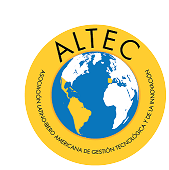Influence of the triple helix model on high growth firms
Abstract
The aim of this paper is to analyse the impact on the development of high
-
growth firms of a Seed
Capital Program (SCP) implemented by
CORFO in Chile. The SCP not only provides financial
aid to entrepreneurs but also technical and administrative assistance through the support of
incubators
hired by CORFO
. There are two types of incubators: University Incubators (UI) and
Non
-
University Inc
ubators (NUI), which may differ in performance depending on the structure of
the
ir
contract. In order to analyse the impact of the SCP in the development of business, a total of
238 new firms beneficiaries with the CORFO program were surveyed (84 supported
by UI and
154 supported by NUI). Two logistic regression models were used, a first model to assess the
probability that a new firm achieves positive sales, and a second model to assess the probability
that the new firm reaches a high growth during the fir
st five years from its inception. Overall,
mixed results were found. SCP’s beneficiaries supported by either UI and NUI have the same
probability of having positive sales when starting their operations. However, five years after
started their operations, b
usinesses supported by UI have higher probabilities of achieving high
growth than businesses supported by NUI. The results highlight a positive interaction between
private entrepreneurs, public agencies and universities
(
triple helix model
)
, allowing to im
prove
the results of this public funded program oriented to the development of high
-
growth
firms in
developing economies.


